 |
| This artistic positive-negative punch-out of the town's name greets visitors at its entrance and provided a peek-a-boo of the beauty waiting to unfold behind it. |
23 April 2011 : Sitting at the outskirt of Barcelona city about a half-hour's drive away, Martorell is a small town best known for being home to the national automobile manufacturer, SEAT, and something more sinister... the historical Pont del Diable (Devil's Bridge).
The town has 2 parts - one part seemingly modern, uniform and organised while the older, historical portion is a labryinth of narrow streets flanked by rows of unique heritage buildings. It is in the old part that the Devil's Bridge spreads its arch across the Martorell-Castellbisbal section of the Llobregat river and this post while showing you the sights of Martorell, is also a picture-by-picture guide of prominent buildings you'll come across when walking from the town's entrance to the ancient bridge.
Getting Here : The town can be reached by the RENFE line and the stop name is Martorell. It is also served by the FGC line and there are 3 stops - Martorell-Vila, Martorell-Enllaç, and Martorell-Central. We've taken a train at the Martorell-Enllaç and Martorell-Central stations and I would say that your best bet would be Martorell-Central for proximity to the town's centre. If you take a cab from Barcelona city, it's about 30 minutes but it won't be cheap.
Before I go any further in being a literary GPS, please know that I only spent 1 day in Martorell so I don't know everything about it. What I'm sharing is the self-explored walking route taken after the taxi dropped us at Martorell's town sign to reach Pont del Diable. The town centre is pretty much a standard urban development. Clean, neat and pleasant. Great to just walk down the street and visit some of the shops to see the kind of things they retail. But the key destination is still Pont del Diable.
We had quite a bit of fun window browsing and checking out the prices of things here. Compared to Barcelona city, I think merchandise are slightly cheaper. Mum bought a neon pink fluff hat at one of those Chinese-owned thrift stores for only €2.50. Kinda loud and obiang (gaudy), but that's her style. She's always been very adventurous in fashion. Thankfully I did not inherit that chromosome.
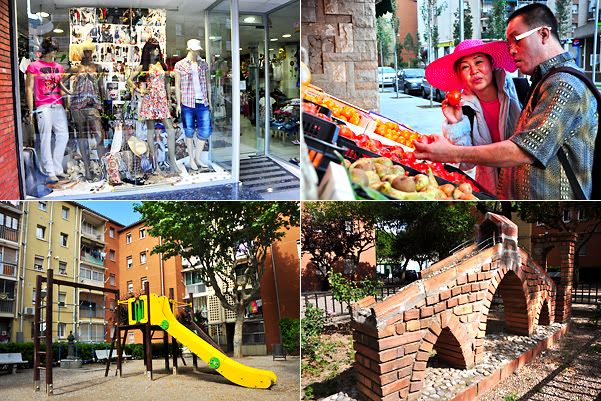 |
| Here's a peek at the living environment of Martorell residents. We came across a replica of Pont del Diable which shows how much pride the town has in owning it. |
 |
| Scenes leading up to the bridge that crosses to old Martorell. It is a pretty scenic route for us maybe because we're seeing all these things for the first time. |
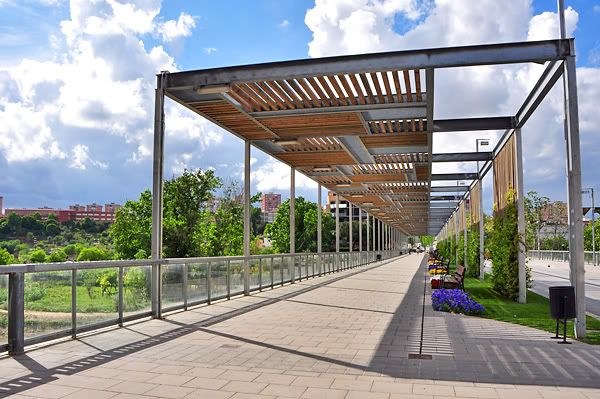 |
| Don't you just love the diminishing perspective and symmetry?.This photo is taken from the other side after it has been crossed. In the background is modern Martorell. |
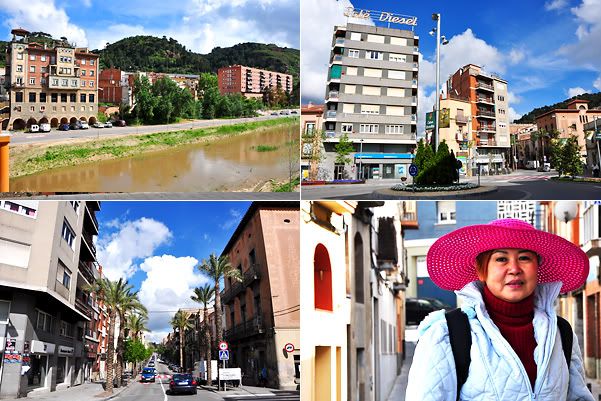 |
| A river divides the 2 sections and upon reaching the older section, the buildings do look less cookie-cutter and weigh the atmosphere with retro European nostalgia. |
Pont Del Diable (Devil's Bridge)
I think what should've been a 30 minutes walk from the beginning of Martorell to the bridge took us 2 hours with the photo stops and shop browsing. When I finally encountered the bridge, I wasn't wow-ed. It was just a very simple red brick arch across the Llobregat river. And the dieted river looked more like a longkang (drain) with its unimpressive brown stream. The surrounding was also polluted with buildings and mega highways so its medieval aura was much diluted.
But as I started to see it through my camera lens, cutting out the modern distractions, the scenery suddenly took on a very picturesque quality. If you're a photographer, this place can yield some rather interesting shots that justifies the trouble to get here. As for sightseeing, it's not really a worthwhile effort unless you're staying near Martorell.
Constructed in 1283, the bridge was destroyed in 1939 during the Spanish Civil War and rebuilt again 1965. Only the foundation dates back to the original Roman period around the first century B.C. Today, it still functions as a pedestrian bridge and you can cross it without any entrance fees, tolls or charges. It's a functioning, free-use public bridge.
Felt kinda incredible crossing it and looking out over the river, it's like taking a walk back in time. If only the bridge can bring me back to the past mistakes of my life...
Pont del Diable features the classic Roman triumphal arch with a small shelter at the highest point. The shelter is also referred to as a chapel. I guess in the olden days, it must have functioned as one but now, it's just a brick shell on top.
The bridge used to be much longer but only this portion survived the ages. Apart from the bridge itself, another point of interest is a park along the residential side of the river's bank.
So why is it called the Devil's Bridge? The term Devil's Bridge is not exclusive to this bridge. There are many bridges given this title because in ancient times, to build a bridge of such scale and complexity is a feat that would've cost many lives. But they were also conferred the title as a result of folklores and legends.
Some of the most popular legends surrounding devil's bridges would be the outsmarting of the devil after a bridge has been built. An example of such a folklore tells of how an old lady made a pact with the devil to build a bridge and the devil could claim the first soul that crosses it. After the bridge was magically constructed overnight, the town's people lured a dog to cross the bridge with a piece of bread.
However, the Devil's Bridge of Martorell has a more historic significance. This bridge was believed to have been commissioned by Hannibal (247-182 BCE) in honour of his father, Hamilcar Barca. Hannibal is one of the greatest military generals in history and a mighty adversary of the Roman empire.
Under the leadership of the briliant Carthaginian general, the undefeatable Romans suffered many set backs so much so that the Romans nicknamed Hannibal the devil. Roman mothers would scare their children by saying that the devil (Hannibal) would visit them at night if they misbehave. That's how this Catalian bridge in Martorell got its name.
The Devil's Bridge sure look like a highway to heaven. This photo was taken at about 6:00 pm on 23 Apr 2011. I think it is a gorgeous time to photograph the bridge so if you're planning to visit during the spring / summer period, note the timing. Days are very long in these months with sunsets starting at around 8:00 pm in Barcelona. In Singapore, our sunsets are between 6:30 - 7:00 pm.
So thankful that the weather was great that day with deep blue skies and dramatic clouds. The photo on top and below were taken at the same angle - the top pic with my semi-tele lens and the bottom with a fisheye.
We spent about 2 hours at the site. Rather, I should say I was fascinated for 2 hours while my parents were done snapping holiday pictures and appreciating the bridge in 15 minutes. That should give you an idea of how this attraction would interest you - not very much to see for regular tourists, potentially rewarding for photography enthusiasts.
Best time to shoot would be early morning or evening because the bridge itself is rather plain so to get more visually interesting shots, you'll need the sunlight to hit the bridge at an angle and for the sun to be down so as to capture starbursts with the bridge in foreground or background.
Sant Jodi (St. George) Day
After our visit to Pont del Diable, we headed back to the shopping complex at the town centre and on the way, we were delighted to walk into a small street parade to celebrate Sant Jodi (St George's) Day.
St George is the patron saint of several Spanish cities in Spain which included Barcelona, Catalonia. 23 April is the generally accepted death anniversary of the saint who died in AD 303. The day is often commemorated by Spaniards dressing up in medieval costumes to reenact the siege between the Moors and Christians. Under the patronage of St George, the Spaniard Christians won the battle and that's why there's such a huge celebration in his honour.
If we look at the many Christian celebrations, all of them commemorate death anniversaries of saints but for Jesus Christ, His birthday is celebrated (25 December) as well as His 'death' (Good Friday). When we celebrate birthdays, we reaffirm that the person is still alive.
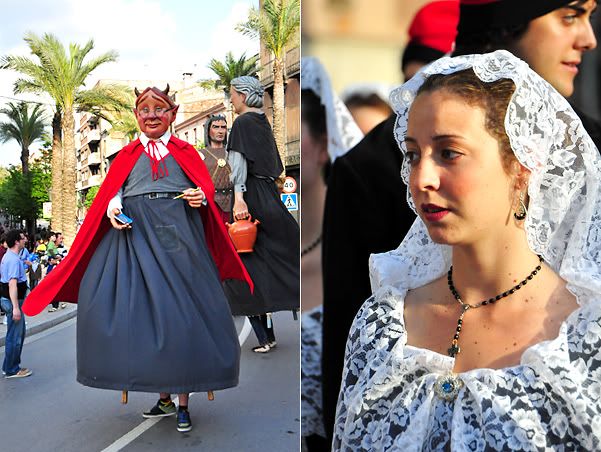 |
| Beauty and the beast. The colourful fiesta featured traditional costimes and fineries as well as tall puppets of kings, queens, knights and jesters. Love the humour of the comedic masks. |
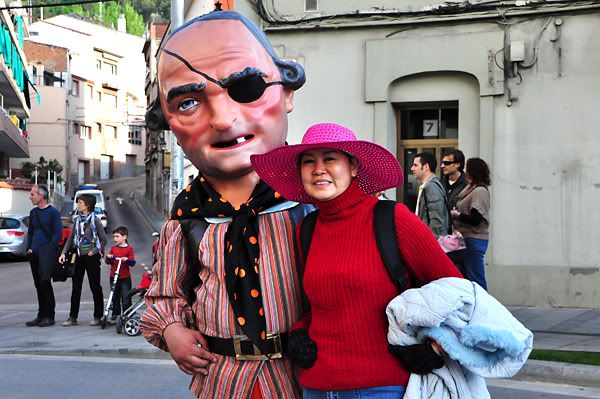 |
| Beauty and the beast? Which is which? Haha... The pirate got himself a bumper loot with such a big ang pow (red packet)! |
Admist the fanfare and celebratetory atmosphere, we ended our visit to Martorell and got our first taste of the rich culture and heritage of Barcelona, Spain. Hope this post has provided you with some useful info and tips. Happy exploring :o)

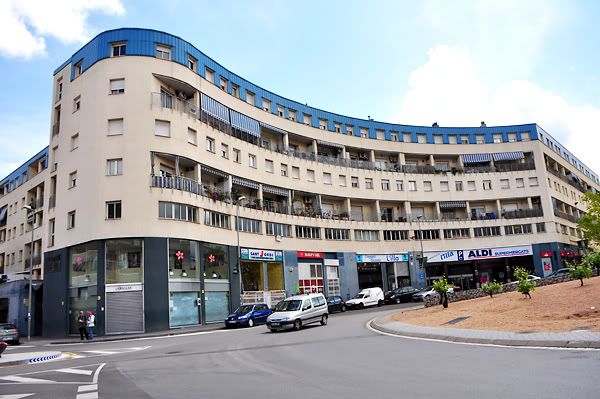
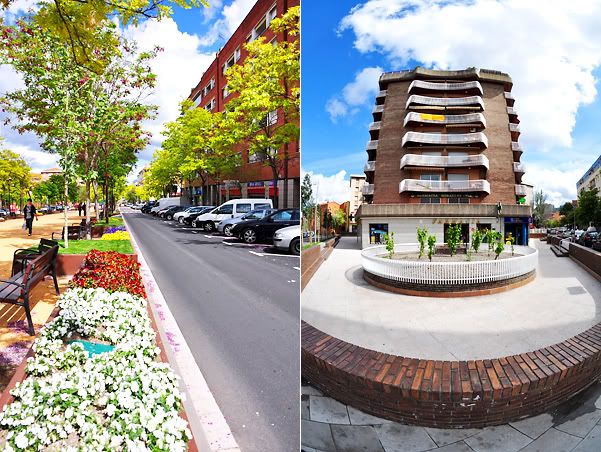
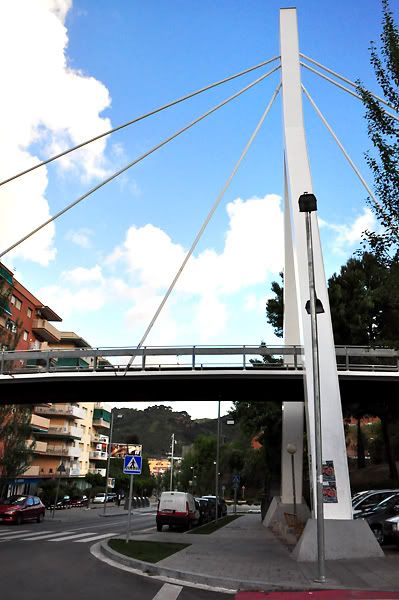

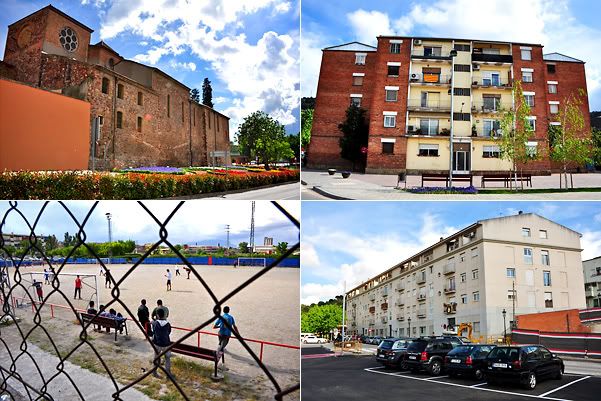










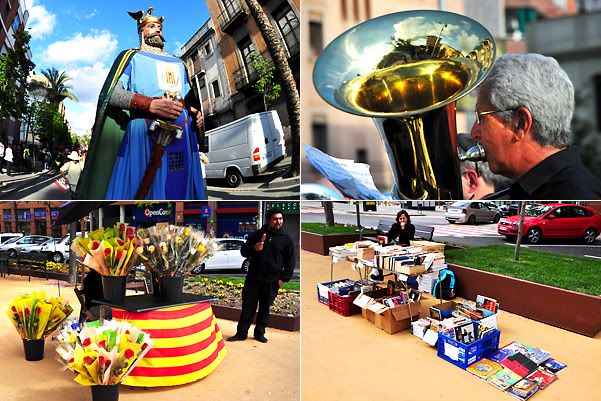
No comments:
Post a Comment